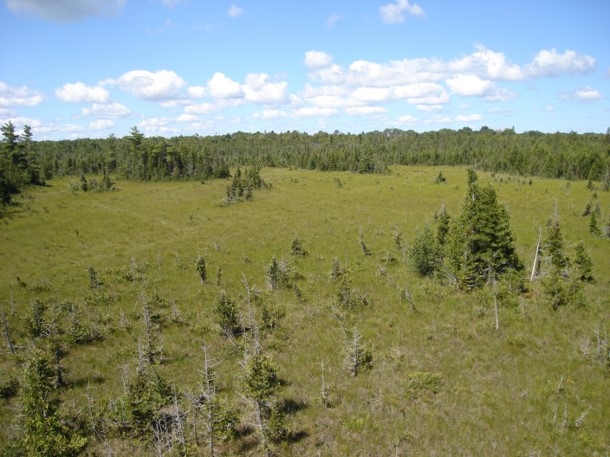Fen Group

Fens are diverse open minerotrophic peatlands that are dominated by graminoids, forbs, shrubs, and stunted conifers and are found throughout Michigan. Fens occur primarily on glacial outwash plains, outwash channels, lakeplains, and kettle depressions in outwash plains and moraines. The saturated soils typically range from slightly acidic to alkaline peats and can also include alkaline marl. Fens are peat-accumulating wetlands that receive water that has been in contact with mineral soils or bedrock. Natural processes that influence species composition and community structure of Fens are groundwater seepage, fluctuating water levels, lateral flow, peat accumulation and erosion, fire, insect outbreaks, windthrow, and flooding by beaver.
Five natural community types fall within the Fen group including poor fen, patterned fen, northern fen, prairie fen, and coastal fen. Classification of these Fen types is based on species composition, community structure, differences (often subtle) in soil chemistry and composition, hydrology, geographic distribution, and landscape setting.
Citation
Cohen, J.G., M.A. Kost, B.S. Slaughter, D.A. Albert, J.M. Lincoln, A.P. Kortenhoven, C.M. Wilton, H.D. Enander, and K.M. Korroch. 2020. Michigan Natural Community Classification [web application]. Michigan Natural Features Inventory, Michigan State University Extension, Lansing, Michigan. Available https://mnfi.anr.msu.edu/communities/classification. (Accessed: January 15, 2026).

